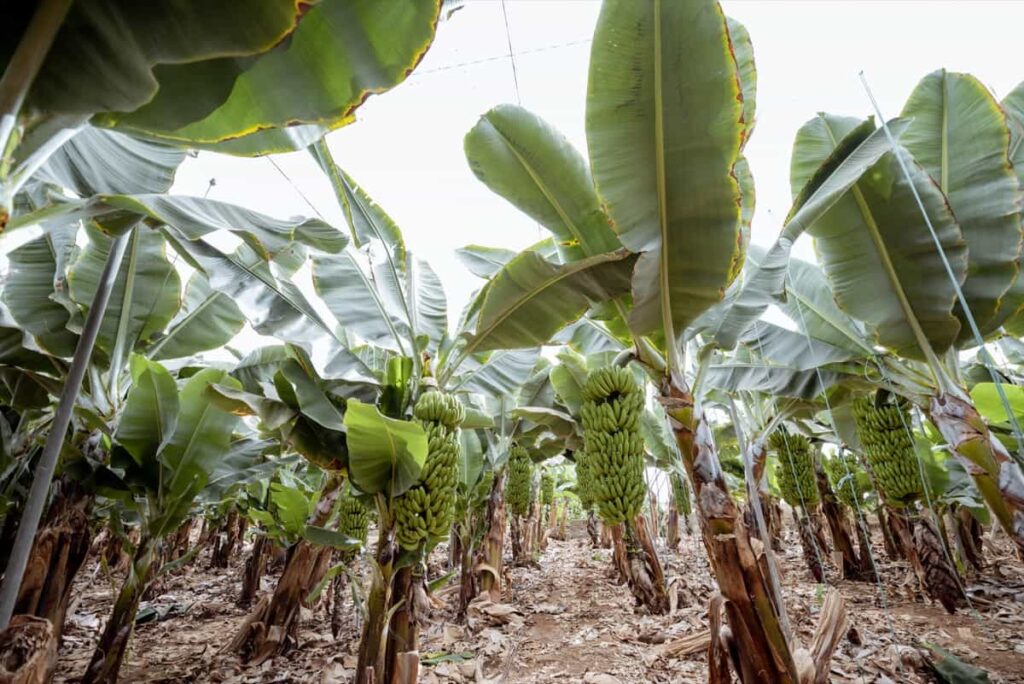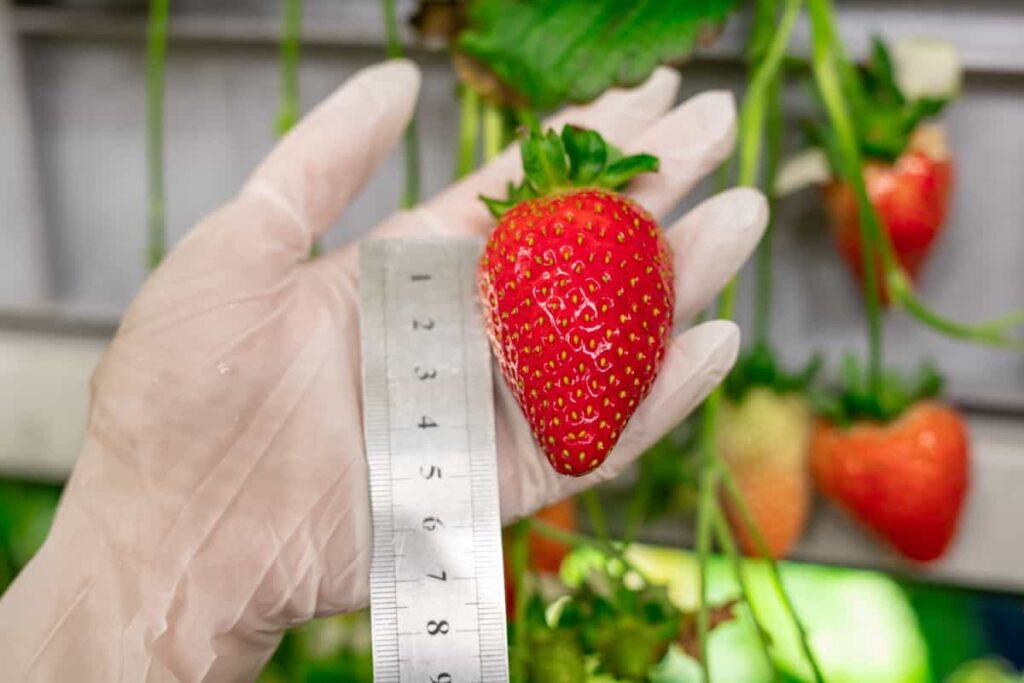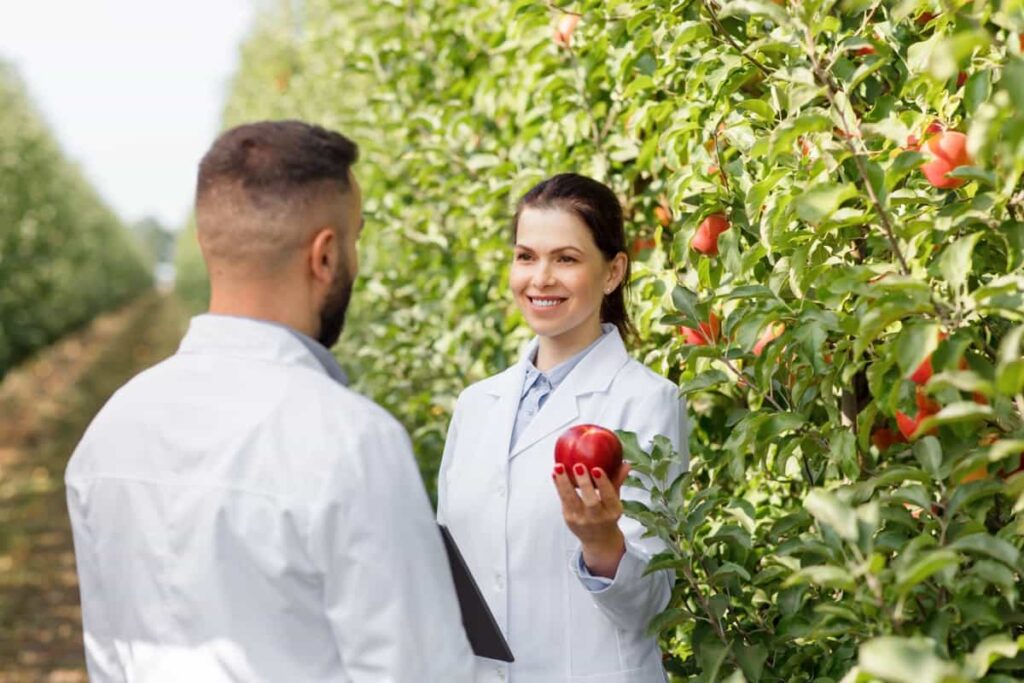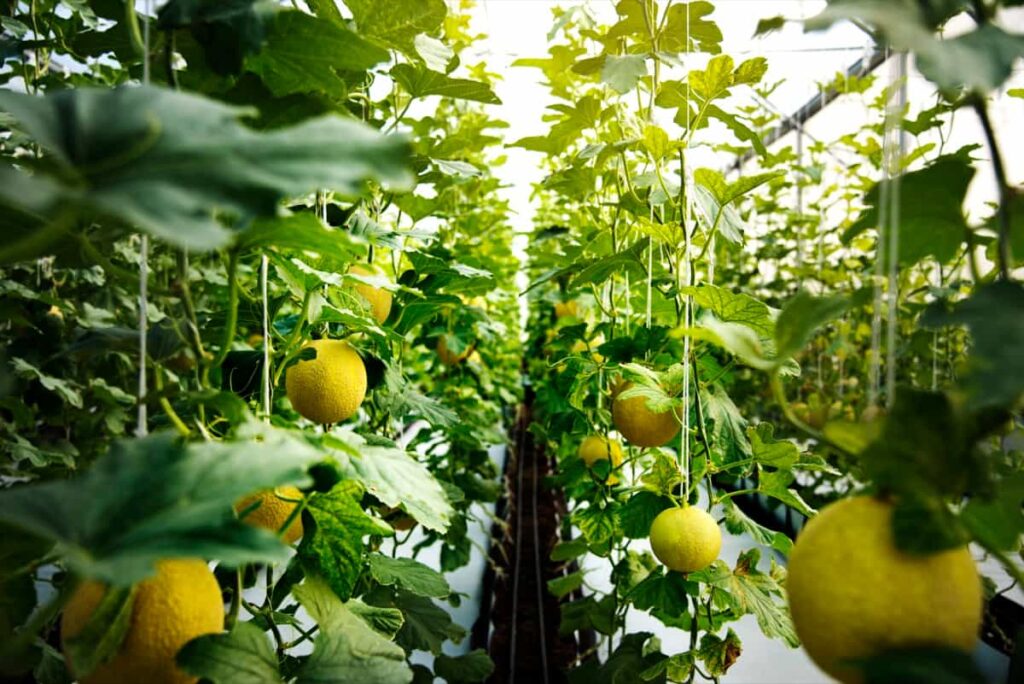Growth regulators are natural or synthetic substances that influence the growth and development of plants. They are also known as plant hormones, phytohormones, or bioregulators. Growth regulators play a major role in fruit farming, as they can affect various aspects of fruit production, such as flowering, fruit set, fruit size, shape, color, ripening, quality, and yield. Growth regulators can also help fruit farmers overcome environmental stresses, such as drought, frost, salinity, pests, and diseases.

Growth Regulators in Fruit Farming
Understanding Growth Regulators: a Game Changer for Fruit Farmers
Growth regulators are classified into five major groups based on their chemical structure and function: auxins, gibberellins, cytokinins, abscisic acid (ABA), and ethylene. Each group has different effects on plant growth and development. As an example, auxins help cells grow longer, roots form, and the apex takes over; gibberellins help stems grow longer, seeds germinate, and flowers bloom; cytokinins help cells divide, shoots form, and senescence is delayed.
ABA slows growth, causes dormancy, and improves stress tolerance, and ethylene controls ripening, abscission, and senescence. In addition to these five groups, other types of growth regulators have been discovered in recent years, such as brassinosteroids, jasmonates, salicylic acid, polyamines, phenols, and flavonoids. These growth regulators have diverse roles in plant growth and development, such as modulating cell wall synthesis, defense responses, antioxidant activity, and gene expression.
The Science Behind Growth Regulators in Enhancing Fruit Production
Growth regulators can enhance fruit production by manipulating the physiological processes involved in fruit development. For example, growth regulators can increase fruit set by stimulating flower initiation and pollination, increase fruit size by promoting cell division and expansion, and improve fruit shape by regulating cell differentiation and orientation.
Enhance fruit color by influencing pigment synthesis and degradation; accelerate fruit ripening by triggering ethylene production and response; improve fruit quality by affecting sugar content, acidity, firmness, flavor, aroma, and nutritional value; and increase fruit yield by reducing fruit drop and increasing fruit number per plant. Growth regulators can also improve the uniformity and consistency of fruit production by synchronizing the developmental stages of fruits within a crop.
How Growth Regulators Boost Harvests
Growth regulators can boost harvests by increasing the quantity and quality of fruits produced per unit area. By applying growth regulators at the appropriate time and dose, fruit farmers can optimize the growth and development of their crops according to their specific needs and goals. For example, growth regulators can help fruit farmers achieve early or late harvests by advancing or delaying flowering and ripening.
Extending the harvest season by prolonging the shelf life of fruits; increase the market value of fruits by improving their appearance and taste; reduce the labor costs of harvesting by facilitating mechanical harvesting; and reduce the post-harvest losses of fruits by enhancing their resistance to storage disorders.
Use of Growth Regulators in Sustainable Fruit Farming
Growth regulators can be used in sustainable fruit farming by reducing the negative impacts of conventional agricultural practices on the environment and human health. For example, growth regulators can reduce the use of chemical fertilizers and pesticides by improving the nutrient uptake and disease resistance of plants and reduce water consumption and soil erosion by enhancing the drought tolerance and root development of plants.
Reduce the greenhouse gas emission and carbon footprint by increasing the biomass production and carbon sequestration of plants; reduce the genetic erosion and biodiversity loss by preserving the genetic diversity and local varieties of plants; and reduce the social inequity and poverty by increasing the income and food security of small-scale farmers.
In case you missed it: How to Increase Apricot Fruit Size: Exploring Apricot Fruit Growth Optimization

Growth Regulators Are the Key to Consistent Quality in Fruit Crops
Growth regulators are crucial for maintaining consistent quality in fruit crops as they help farmers navigate the variability and unpredictability of natural factors affecting production. They help farmers cope with climate changes, biotic stresses, genetic variation, and market demands. They help farmers manage temperature fluctuations, pests, diseases, weeds, and competition, manage genetic variation, and adjust to specific standards for fruit size, shape, color, ripeness, and quality. Overall, growth regulators are essential for maintaining the quality of fruit crops.
Growth Regulators’ Impact on Fruit Development
Growth regulators play a crucial role in fruit development, either positively or negatively, depending on the type, concentration, timing, and mode of application. They can stimulate or inhibit fruit development by activating or blocking signaling pathways and gene expression, enhance or impair fruit development by increasing or decreasing carbohydrates, water, and minerals availability, promote or prevent fruit development by inducing or suppressing hormone synthesis and degradation, or modify or maintain fruit development by altering or preserving cell wall, membrane, organelle, and nuclei structure and function.
Integrating Growth Regulators in Fruit Cultivation
Integrating growth regulators in fruit cultivation requires a comprehensive and holistic approach that considers the interactions and synergies among growth regulators and other agronomic practices. For example, integrating growth regulators in fruit cultivation requires a careful selection and combination of growth regulators that are compatible and complementary with each other and with the crop.
Integrating growth regulators in fruit cultivation requires a precise calibration and application of growth regulators that are appropriate and effective for the target plant and the desired outcome; integrating growth regulators in fruit cultivation requires regular monitoring and evaluation of growth regulators that are responsive and adaptive to the changing conditions and feedback of the crop Integrating growth regulators in fruit cultivation requires constant research and innovation of growth regulators that are novel and improved for the current and future challenges and opportunities of the crop.
Using Growth Regulators in Organic Fruit Farming
Using growth regulators in organic fruit farming is possible and beneficial as long as the growth regulators comply with the principles and standards of organic agriculture. For example, using growth regulators in organic fruit farming is possible if the growth regulators derived from natural sources, like plant extracts, microbial products, or animal by-products, rather than from synthetic chemicals; using growth regulators in organic fruit farming is beneficial if the growth regulators enhance the health and productivity of plants, soil, animals, and humans rather than harm them.
Using growth regulators in organic fruit farming is possible if they growth regulators are applied in accordance with the regulations and certifications of organic agriculture, such as the National Organic Program (NOP) in the United States, or the European Union Organic Farming Regulation (EU) 2018/848 in Europe; using growth regulators in organic fruit farming is beneficial if the growth regulators improve the quality and safety of organic fruits, rather than compromise them.
In case you missed it: How to Increase Citrus Fruit Size: Exploring Optimization for Larger Citrus Fruit Growth

Tips for Growth Regulators in Fruit Farming
- Applying auxins to mango and citrus trees to reduce pre-harvest fruit drop
- Spraying gibberellins on grapes to produce loose clusters with larger berries
- Dipping kiwi fruits in cytokinins to increase their size
- Applying ABA to apples to enhance their red color
- Spraying ethylene on pineapples to induce flowering
- Applying brassinosteroids to strawberries to increase their yield and quality
- Spraying jasmonates on bananas to regulate their ripening
- Applying salicylic acid to tomatoes to improve their shelf life
- Applying polyamines to cherries to increase their size and firmness
- Applying phenols and flavonoids to blueberries to improve their antioxidant activity
In case you missed it: Fruit Size Management: How to Get Bigger Fruits and Techniques for Increasing Fruit Size

Conclusion
In the intricate realm of fruit farming, growth regulators emerge as vital orchestrators, fine-tuning every stage from flowering to ripening. Auxins, Gibberellins, and others play distinctive roles, influencing size, ripeness, and quality. Mastering their synergy empowers farmers to craft bountiful harvests, elevating the art of fruit cultivation.
- Management Pests and Diseases in Your Cotton Field
- Sheep Farming Business Plan for Beginners
- Aquaponic Farming at Home: A Step-By-Step Guide
- Profitable Village Farming Business Ideas in 2024
- High-Yield Aquaculture: Fast-Growing Fish for Farming
- Effective Fish Pond Construction Techniques for Beginners
- Irrigation and Water Management in Pineapple Farming
- Blossom to Harvest: Mastering Flowering and Pollination in Papaya Farming
- Pig Fattening Essentials: From Selection to Sale for Beginners
